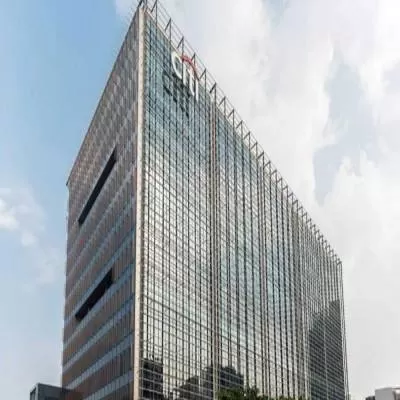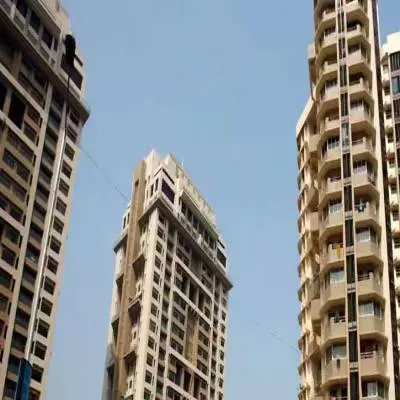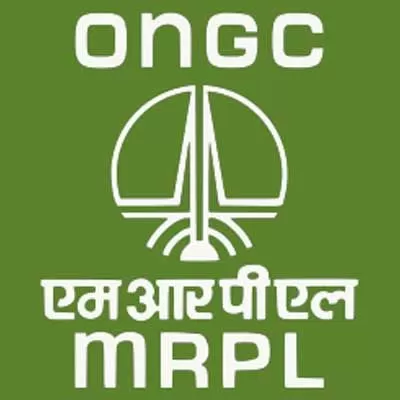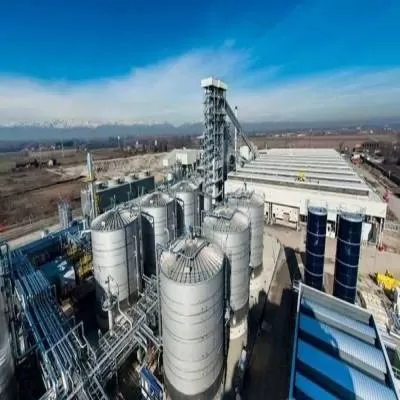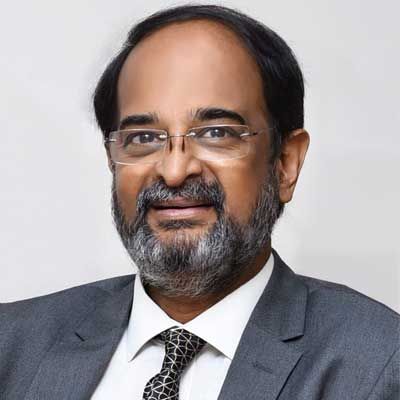- Home
- Infrastructure Energy
- OIL & GAS
- The india report
The india report
Jas the Indian economy suddenly gained momentum? The revision in the way GDP is calculated - with a change in the base year and a ´value-added´ way to measure output - has seen a swell in growth from around 5 per cent just a year ago to 7.3 per cent in FY15. However, corporate results along with other key, high-frequency lead indicators continued to contrast with the headline GDP growth data.
Beyond the headlines
So, rather than looking at the headline number, let us examine the major components of GDP and how they are faring. Consumption demand fell marginally in the past two years, as reflected in the private final consumption expenditure in the GDP declining to 57 per cent in FY15 from 57.9 per cent in FY13. There is a shift in the consumption pattern with rural demand weakening while urban demand has improved marginally. Going ahead, the trend is likely to continue.
The second major constituent of the economy, investments, is yet to pick up in a meaningful way. This is primarily owing to the over-leveraged balance sheets of the corporate sector, backlogs in project execution and weak rural demand. Under such circumstances, the ball is now in the government´s court to revive investment. The government has tried to facilitate a speedy turnaround in capex through a mix of fiscal and administrative measures by expediting clearances of project backlogs. These steps will start yielding results in the next couple of quarters.
India´s export has been constantly falling since June 2015. This is primarily owing to fragile external demand conditions, accentuated by the drop in international commodity prices, with export price realisations suffering a setback. The weakness in external sector growth has also had an impact on activity in sectors with significant exposure to global demand. For instance, textiles, chemicals, gems and jewellery, rubber, and metals and metal products have seen negative growth in capex in FY15 compared to FY14.
Going ahead, the GDP is expected to see only modest growth in FY16 owing to the above factors. Nonetheless, an aggressive monetary policy along with trickledown effect of the government´s capital spending may throw up a surprise and we may exceed that growth rate. Now, let us examine in detail how different macroeconomic factors will pan out going forward.
The Index of Industrial Production (IIP) is based mainly on data gathered from large companies, and provides a quick estimate of how things are going. This is the indicator the government relies on for early estimates of industrial and GDP growth. If one analyses industrial performance in value terms, there isn´t much of an upsurge. The IIP rose 2.1 per cent in FY15, against a contraction of 0.5 per cent the previous year. Within that, manufacturing grew 2.2 per cent, against a ontraction of 1.3 per cent the previous year. However, manufacturing has looked up, likely as a result of lower input costs and a fall in global commodity prices. The cumulative growth for the period April-May 2015-16 over the corresponding period of the previous year stands at 3.8 per cent compared to 4.3 per cent a year ago. However, in the past two months, it expanded more than 4 per cent, signalling a slow and steady, if uneven, recovery in industrial production. Industry has been clamouring for rate cuts to stimulate industrial growth. RBI has slashed rates thrice by 25 bps each in 2015 with the last one coming in June.
CAD at 1.5% of GDP for FY16
In FY15, worries on the external account front remained largely at bay as global oil prices slumped while foreign investments into the country remained robust. For the fiscal (FY2014-15), the current account deficit (CAD) shrank to US$ 28 billion, or 1.4 per cent of GDP, from US$ 32.4 billion, or 1.7 per cent of GDP, a year ago. A small disappointment was the 4QFY15 reading, which did not show an expected surplus, though deficit reduced sharply to US$ 1.5 billion (0.3 per cent GDP). Lower CAD, on the back of contraction in trade deficit and marginal improvement in the net invisible earnings, along with a sizable increase in net financial flows, enabled a large build-up of reserves.
The reduction in CAD was driven by imports declining more than exports. Imports remained subdued owing to low domestic demand and a sharp reduction in commodity prices helped further by import restrictions on gold. Certain restrictions on this front were eased in November, but the demand pick-up has not been commensurate. Exports contracted owing to a slowdown in global growth and low commodity prices; any positives from a weaker INR provided little support.
Looking ahead, for FY16, we expect the CAD to widen to 1.5 per cent of GDP in FY16 from 1.4 per cent in FY15 as export growth remains subdued, while non-oil non-gold imports pick up, led by rising domestic demand. However, we do not see financing as a concern. We believe a pick-up in portfolio and FDI inflows should more than cover the CAD.
CPI inflation expected at 5.5% for FY16
From an average inflation of 10 per cent over FY09-FY14, India is witnessing sub 6 per cent consumer price index (CPI) inflation since September 14 on the back of cyclical and structural factors playing out on both domestic and global fronts. The combination of soft global commodity prices and negative domestic output gap has resulted in significant decline in input price inflation across sectors. Excess capacity is likely to cap any generalised price pressure in the economy, especially amid tight money supply. Monsoon is the biggest risk hereon, but a lot will depend on government action to keep a tab on food inflation. We expect average CPI inflation to moderate towards 5 per cent in FY16 from 6 per cent in FY15, in anticipation of proactive steps from the government. Going forward, we expect that maintenance of a 4 per cent inflation target would require persistence in the area of reforms and unambiguous communication from policymakers.
Growth revives in core sectors
If we consider the infrastructure sector as a whole, it is mainly dependent on the eight core sectors: Steel, Cement, Coal, Power, Crude Oil, Natural Gas, Fertilisers and Petroleum Refinery Products. These industries have a combined weight of 38 per cent in the IIP. In April-March last fiscal, the cumulative growth for the core sector was 3.5 per cent, lower than 4.2 per cent in 2013-14. Cumulatively, in the first four months of this financial year, it fell to 2.1 per cent from 5.5 per cent in April-July 2014-15. This was largely because in April, output declined 0.4 per cent. However, in May and June, the infrastructure sector had expanded by 4.4 per cent and 3 per cent. Then again, core industries growth in July slowed to a three-month low of 1.1 per cent as output of crude oil, natural gas and steel contracted. The slowdown in the core sector is expected to heighten demand for a further rate cut by RBI, which has already lowered the key lending rate thrice this year.
Report card of Modi´s government
Although the NDA Government has not undertaken any Big Bang reforms, the period has been quite satisfying on various counts, discounting of course, some grey areas. Overall, the government has scored distinction on the policy front as India has emerged from its policy paralysis phase. The many path-breaking policy initiatives taken by the government seem to have put the country´s growth engine on track. If we take a look at the biggest achievement of the Narendra Modi-led Government, it would undoubtedly be the passage of the Insurance Bill by Parliament that had been stuck for the past many years. The government has raised the limit of foreign direct investment (FDI) in the insurance sector as well as pension sector to 49 per cent. This is the biggest reformist step of recent times and will surely bring a sea change in the Indian insurance sector as well as crucial spending in the infrastructure sector.
The second biggest achievement for the government came in the form of the coal block auction that had been cancelled by the Supreme Court following corruption charges levied against the UPA government. Of the 204 blocks that were cancelled, the government auctioned 67 blocks and thereby mopped up funds of Rs 4 lakh crore. In the same way, the government mopped up around Rs 1 lakh crore by selling airwaves to telecom companies. This capital receipt will surely play an important role in infrastructure development.
However, the improvement in economic performance has largely been attributed to positive global factors rather than the present government´s interventions. On the downside, despite making various efforts and policy decisions, the government wasn´t able to restart the expected investment cycle, as efforts to clear various crucial Bills have been thwarted by the opposition owing to lack of majority in the Rajya Sabha. This has affected the economic recovery process, which, in turn, has been quite visible at the bourses with the bulls losing steam and the bears once again ruling the roost. As such, while there have been some hits by the new NDA Government, there have been quite a few misses too.
Transitions, however, cannot be simple, leave alone transformation - especially if it involves breaking policy walls and shaking up the steel frame of the nation and changing its mindset from the word go; building frameworks and, more important, drawing red lines for a ministry whose first name was inexperience; centralising decision-making and trying to control not just the medium but also the message; and dipping into the campaign goody bag of phrases and abbreviations and assembling schemes and programmes that needed to convey action: Jan Dhan, Namami Gange, Make in India, Skill India, Beti Bachao...
Considering this, the Modi Government should now focus on the proper execution of initiatives and policies put forward during the past year. In fact, the next four years should be dedicated to proper execution of policies so the pace of GDP growth can be improved to double digits.
Union Budget: Big push for infrastructure
A lot has been written over India´s infrastructure requirements in the UPA government. Finally, the NDA Government has taken the right steps to meet them through the Union Budget 2015-16. The visionary and long-term approach of the Budget is to revive growth, particularly in the manufacturing and infrastructure sectors that form the backbone of the Make in India campaign. The focus on infrastructure in the Budget will revive investor confidence, channel funding and invigorate investments in the sector while maintaining fiscal prudence.
Finance Minister Arun Jaitley announced a significant increase of Rs 70,000 crore in investment in infrastructure in 2015-16 over the last year from the Centre´s funds and resources of CPSEs. The government has increased the outlay for roads and gross budgetary support to the railways by Rs 14,031 crore and Rs 10,050 crore, respectively. Jaitley listed infrastructure among the five major challenges he was grappling with, and said, public investment needs to step in to catalyse investments because private funding through the PPP model is still weak. He also laid stress on the need to revitalise the PPP mode of infrastructure development. The CAPEX of the public-sector units is expected to be Rs 317,889 crore, an increase of about Rs 80,844 crore over RE 2014-15. In the roads sector, Jaitley announced that all 178,000 unconnected habitations would be linked by all-weather roads. ´This will require completing 100,000 km of roads currently under construction plus sanctioning and building another 100,000 km of roads,´ he said.
Outlining other steps to be taken by the government to boost infrastructure, Jaitley said a National Investment and Infrastructure Fund (NIIF) would be established. On July 29, 2015, the Union Cabinet approved the creation of the Rs 20,000-crore NIIF to back new and stressed projects and help restart the investment cycle. This will enable the body to raise debt and, in turn, invest as equity in infrastructure finance companies like the IRFC and NHB. Besides, the Cabinet also gave approval to foreign investment in Alternative Investment Funds for facilitating domestic investment.
Through the Budget, the government has revitalised the Indian shipping and ports sector, paving the way for corporatisation of major port trusts and bringing tax relief for Indian sailors. India has 12 major ports including Kandla, Mumbai, JNPT, Marmugao, New Mangalore, Cochin, Chennai, Visakhapatnam, Paradip and Kolkata, which handle 61 per cent of the country´s cargo. To augment the power sector, India will set up five ultra mega power projects with investments of around Rs 1 lakh crore. Interestingly, this year´s Railway Budget did not include a single new train or new project. In the 2015 Rail Budget, the government announced a record investment plan of over Rs 1 lakh crore in 2015-16 from an estimated Rs 61,500 crore in 2014-15. Indeed, the 2015 Budget felt more like a private-sector strategy document than a public-sector Budget plan. It articulated a series of goals, drivers and ´thrust´ areas that would drive investment over the coming years, with increased capital commitments to help achieve those goals. In line with the Prime Minister´s Make in India campaign, Railway Minister Suresh Prabhu finally gave the green signal in March 2015 to the two much-awaited big-ticket FDI proposals for setting up diesel a nd electric locomotive plants in Bihar at a cost of Rs 2,400 crore.
Smart Cities, AMRUT and Housing for All by 2022
The stage has been set for kick-starting India´s biggest urban infrastructure mission, wherein the Prime Minister launched three massive projects. A budget of Rs 3 lakh crore has been allocated, which will be spent on these projects in the next five years.
100 Smart Cities: Rs 48,000 crore will be spent on creating 100 smart cities across India. Based on the population and area, a fixed number has been allocated for each state. Hence, Uttar Pradesh, the most populous state, will get 13 smart cities while Tamil Nadu will receive 12 smart cities. Maharashtra will get 10 cities, while Karnataka and Gujarat will get six each. West Bengal and Rajasthan have been allocated four smart cities; Bihar, Andhra Pradesh and Punjab three each; and Odisha, Haryana, Telangana and Chhattisgarh two each. Jammu and Kashmir, Kerala, Jharkhand, Assam, Himachal Pradesh, Goa, Arunachal Pradesh and Chandigarh, along with the National Capital Region (NCR), will get one smart city each.
AMRUT for 500 Cities: The Atal Mission for Rejuvenation and Urban Transformation (AMRUT) for 500 Tier-II and Tier-III cities will also be launched along with the smart city project. For AMRUT as well, states have been asked to recommend cities that can be included under this scheme. Uttar Pradesh again leads the pack as it can nominate 64 cities under the project. Under this scheme, the Central Government will provide 30 per cent of the overall cost if the city has a population of over 10 lakh; and 50 per cent if under 10 lakh.
Pradhan Mantri Awas Yojana: Housing for All by 2022: The third project is the Housing for All by 2022 scheme, wherein more than 2 crore homes would be built across all urban locations in the next seven years. The Central Government will provide a grant of Rs 1 lakh to Rs 2.5 lakh for every home. The vision is to provide a home to everyone living in a city. Women, SC/STs and people from economically weaker sections (EWS) will be the main beneficiaries of this urban housing project.
Swachh Bharat Abhiyan
The smart city mission is impossible without Swachh Bharat Abhiyan. Therefore, the government has smartly linked the Swachh Bharat Mission with the smart cities programme. In September 2014, the Cabinet Committee on Economic Affairs approved the Swachh Bharat Mission, which was officially launched on October 2, 2014, for a period of five years, to create a clean India. Initially, it will be implemented in 4,041 towns. The total cost of the campaign will be Rs 62,009 crore, of which the Union Government will contribute Rs 14,620 crore and the rest will be mobilised from other sources, including non-state entities.
The Cabinet also approved the flagship ´Namami Gange´ programme, which integrates the efforts to clean and protect the River Ganga in a comprehensive manner. The programme has a budget outlay of Rs 20,000 crore for the next five years. The amount was a significant fourfold increase over the expenditure allocated to the task of cleaning the Ganga over the past 30 years.
India in a sweet spot as crude oil prices below $60 per barrel A steep fall in crude oil prices to below US$ 60 per barrel brought in a sigh of relief, which paved the way for near complete de-regularisation of petrol and diesel prices. However, it also posed a risk of lower excise duty collection, but the government increased the excise duty to neutralise the fall in excise revenue. Any impositions of customs duty on import of crude oil would provide a cushion for the government to reduce excise duty on petroleum products.
The sharp decline in crude oil prices has been a big positive for India, shrinking oil imports by 17 per cent in FY15 (from US$ 165 billion to US$ 138.3 billion). The peak-to-trough fall in oil prices has been close to 50 per cent in the past year; a rebound was noted earlier in the year owing to signs of reduced production and geopolitical concerns, but prices continue to average close to around US$ 65 per bbl levels thereafter.
For the current year as well, we expect oil prices to remain muted, as oil supply continues to outpace demand. In 2015, EIA expects world oil demand at 93.6 million barrels per day, continuing to be lower than total supply of 95.5 million barrels per day. This, in turn, is likely to keep the oil import bill in control; we believe the impact of every 10 per cent reduction in oil prices as leading to US$ 8-9 billion improvement in net imports. The downside risks to our projections are a significant growth slowdown in China and the increased supply from the US-Iran deal coming into the market earlier than expected (six to 12 months), both of which have the potential to further lower crude oil prices.
Digital India will push economic growth
The new dimensions of the ongoing digital revolution are evolving year-by-year, enabling an abundance of information to move faster, cheaper, in more intelligible forms, in more directions, and across borders of every kind. Therefore, the Prime Minister has launched the Digital India programme to reform governance through technology. With this programme, the government is looking to transform its existing service delivery systems, greatly improve speed of delivery, create jobs and induce economic activity in areas that were not digitally connected û and therefore needs to heavily bank on technologies like social, mobile, analytics and cloud (SMAC), among others.
The vision of Digital India is centred on three key areas: Digital infrastructure as a utility to every citizen, governance and services on demand, and digital empowerment of citizens. We believe SMAC will act as a catalyser in helping the Modi Government realise its Digital India Growth.
India´s goal of 100 smart cities cannot happen without connectivity. The app economy, the smartphone economy, the Internet economy et al can thrive and grow only when connectivity is great - not just in large cities but across all villages, districts and towns.
Connectivity will bring businesses closer to global markets. Of the about 48 million small and medium enterprises (SMEs), less than 1 million are online. Offline SMEs aren´t able to reap the benefits of the online era - such as improving productivity, cutting wastage and faster access to local and global markets for their products and services. Connectivity will change that; create more jobs, increase exports and lead to overall development of the country.
India needs to speed up development of its digital infrastructure. The country can look at best models around the world to achieve the goal of complete connectivity. India is the second largest telecommunication market in the world. To ensure faster rollout of infrastructure, the bureaucracy must respond with speed and agility. It is indeed surprising that the country does more than US$ 100 billion worth of technology and business services exports to practically all countries in the world, but can´t speed up development of its own digital infrastructure. Today, Indian engineers are among the best known to deliver services for global clients, including some of the largest Fortune 500 companies. India has the capability to build the world´s best connected digital society.
Realty may take a year for turnaround
India´s real estate market is in bad shape owing to a credibility crisis faced by developers. Drying up of bank lending and government efforts to reduce black money could possibly result in a crash in realty prices in the country´s metropolitan cities. The real estate market has been among the sectors worst hit by the economic downturn which, coupled with high interest rates in the face of persistent inflation and delays in securing mandatory government approvals, has kept wary homebuyers away for the past couple of years. Debt-laden developers in the country´s key property markets - Mumbai, Bengaluru, Chennai and the NCR centred on Delhi û have been struggling with slow sales, high unsold inventory, delayed construction and stalled projects.
RBI data suggests that the banking system has turned the tap off for property developers over the past year. This has, in turn, made developers either stop construction or cut prices. While the RBI´s Housing Price Index suggests prices have moderated on a pan-India basis, data from property websites suggests a deeper slowdown in India´s large cities, with prices falling by 7-18 per cent year-on-year. Debt levels peaked at many realty firms, including DLF, India´s largest developer by market value, forcing it to sell non-core assets, exit businesses and strike JV deals with other developers to bring down capital expenditure on projects. Repayment of debt hasn´t been easy as cash flows from project sales have remained under strain and developers have been forced to borrow more, in some cases to repay earlier loans. The real estate sector, meanwhile, seems to be in a transition stage, where it is gradually moving from an investor-driven to an end-user-driven cycle. Interest rates are slowly coming down and affordability will improve. Over the next year, it is expected that developers will hasten the pace of construction and focus on execution of existing projects rather than go ahead and pre-launch multiple projects to generate cash flows.
Rising inventory levels in a country where housing shortage is such a critical issue, indicates that the supply that is available is unaffordable to many, according to property consultants. The Housing for All scheme aims to provide at least 20 million homes to lower-income earners. These apart, a real estate bill aimed primarily at protecting consumer rights is also waiting to be cleared.
A clutch of developers such as DLF and Embassy-Blackstone are slowly getting ready for a possible real estate investment trust (REIT) listing, once the Finance Ministry clears taxation hurdles. A REIT listing will give developers the opportunity to monetise commercial assets and generate liquidity. REITs will completely transform the office sector, improve transparency and attract more investments.
Taking stock
The key problem facing the Indian economy is infrastructure deficit (both physical and social). At the current juncture, policy intervention and public spending are critical to address infrastructural issues because of the stretched and over-leveraged balance sheets of the corporate sector, and higher non-performing advances of the banking sector to fund corporate for this. Most recent policy initiatives taken by the government are aimed at addressing these structural issues.
If the current policy initiatives and efforts are sustained, the Indian economy will gradually return to a higher growth trajectory over a two-to-three-year period. While infrastructure expansion is in slowdown mode across developed and emerging economies, India´s is opening up.
The Government of India has already reaffirmed its commitment towards building infrastructure through the following initiatives:
- Budgetary investment allocation.
- Creation of a dedicated investment fund.
- Tax-free bonds.
- Revitalisation of the public-private partnership (PPP) through rebalancing of risks.
- Creation of five new ultra mega power projects in the plug-and-play model for hassle-free execution.
- Ten-year tax holiday for power projects.
- Extension of plug-and-play models to roads, ports and railways.
- Many more pipeline policy initiatives to build world-class infrastructure.
Now the government´s thrust on infrastructure is visible, the capital goods sectors is also seeing some traction given the recent data and order flow of companies. Another space that will see a good amount of action is power T&D. The mismatch in demand-supply as well as power needs require huge investments in the T&D space. Already, over Rs 100,000 crore of orders are being planned.
Special emphasis has also been given to the creation of smart cities, putting SEZs to work, and on the creation of the International Financial Services Centre to compete with other major centres in Asia. There will be huge investment opportunities in logistical infrastructure for roads, railways, air and seaports, power, telecom, defence, etc. We see significant growth in India´s infrastructure sector over FY16-18, led by increased government infrastructure spending, easing of regulatory hurdles, and introduction of innovative financing models to spur private-sector investment. Overall, we believe companies that can efficiently manage their working capital and cash flows would be able to scale-up profitably over the medium to long term.
Change in Market Cap of Leading Construction Companies
| Company | Market Cap(Sep 30,2015)`crore | Market Cap(Jun 30,2014)`crore | % change |
|---|---|---|---|
| NBCC | 11,515.80 | 4,159.57 | 176.85% |
| NCC | 4,152.81 | 2,049.05 | 102.67% |
| MBL Infrastructures | 1,001.54 | 469.63 | 113.26% |
| ITD Cementation India | 1,241.26 | 512.25 | 142.31% |
| IRB InfrastructureDevelopers | 8,315.31 | 7,624.43 | 9.06% |
| RPP Infra Projects | 262.62 | 174.58 | 50.43% |
| Gammon Infra Projects | 779.70 | 1,157.56 | -32.64% |
| Pratibha Industries | 381.99 | 595.72 | -35.88% |
| Ashoka Buildcon | 3,145.01 | 2,346.15 | 34.05% |
| Larsen & Toubro | 136,500.19 | 154,115.42 | -11.43% |
| Punj Lloyd | 792.05 | 1,696.89 | -53.32% |
| Vascon Engineers | 551.25 | 268.66 | 105.19% |
| C&C Constructions | 54.94 | 115.75 | -52.53% |
| Lanco Infratech | 1,227.17 | 69.66 | -52.53% |
| Ramky Infrastructure | 167.02 | 485.45 | -65.59% |
| Man Infra construction | 893.48 | 856.97 |
Change in Market Cap of Leading Realty Companies
| Company | Market Cap(Sep 30,2015)`Crore | Market Cap(Jun 30, 2014)`Crore | % change |
|---|---|---|---|
| CHD Developers Ltd | 145.97 | 83.68 | 74.44% |
| Kolte-Patil Developers Ltd | 1,260.52 | 1,134.34 | 11.12% |
| Ajmera Realty & InfraIndia Ltd | 406.48 | 1.82 | 22,276.59% |
| Ansal Properties &Infrastructure Ltd | 261.29 | 624.12 | -58.13% |
| Sobha Ltd | 2,723.72 | 4,900.24 | -44.42% |
| Indiabulls Real Estate Ltd | 2,945.50 | 4,242.00 | -30.56% |
| Godrej Properties Ltd | 6,565.98 | 4,855.19 | 35.24% |
| Oberoi Realty Ltd | 9,252.05 | 8,520.93 | 8.58% |
| Nitesh Estates Ltd | 220.94 | 254.48 | -13.18% |
| Puravankara Projects Ltd | 1,471.51 | 2,632.36 | -44.10% |
| Unitech Ltd | 1,614.26 | 8,782.73 | -81.62% |
| Anant Raj Ltd | 1,062.35 | 2,207.35 | -51.87% |
| Mahindra LifespaceDevelopers Ltd | 1,919.92 | 2,186.39 | -12.19% |
| DB Realty Ltd | 1,464.42 | 39.73 | 3,586.09% |
| Orbit Corporation Ltd | 72.59 | 289.19 | -74.90% |
| DLF Ltd | 24,434.85 | 38,179.60 | -36.00% |
| Sunteck Realty Ltd | 1,395.33 | 2,232.66 | -37.50% |
| Omaxe Ltd | 2,456.35 | 2,596.25 | -5.39% |
| Prozone Intu Properties Ltd | 469.25 | 322.47 | 45.52% |
| Ashiana Housing Ltd | 1,883.28 | 981.23 | 91.93% |
| Parsvnath Developers Ltd | 783.33 | 455.17 | 72.10% |
- Infrastructure
- GDP
- Textiles
- Chemicals
- Gems
- Jewellery
- Rubber
- Metals
- IIP
- CAD
- CPI
- Steel
- Cement
- Coal
- Power
- Crude Oil
- Natural Gas
- Fertilisers
- Petroleum Refinery Products
- NDA Government
- Narendra Modi
- FDI
- UPA government
- Rajya Sabha
- an Dhan
- Namami Gange
- Make in India
- Skill India
- Beti Bachao
- Union Budget
- infrastructure
- Arun Jaitley
- CPSE
- CAPEX
- PPP
- NIIF
- Suresh Prabhu
While infrastructure expansion is in a slowdown mode across developed and emerging economies, India is opening up. Jas the Indian economy suddenly gained momentum? The revision in the way GDP is calculated - with a change in the base year and a ´value-added´ way to measure output - has seen a swell in growth from around 5 per cent just a year ago to 7.3 per cent in FY15. However, corporate results along with other key, high-frequency lead indicators continued to contrast with the headline GDP growth data. Beyond the headlines So, rather than looking at the headline number, let us examine the major components of GDP and how they are faring. Consumption demand fell marginally in the past two years, as reflected in the private final consumption expenditure in the GDP declining to 57 per cent in FY15 from 57.9 per cent in FY13. There is a shift in the consumption pattern with rural demand weakening while urban demand has improved marginally. Going ahead, the trend is likely to continue. The second major constituent of the economy, investments, is yet to pick up in a meaningful way. This is primarily owing to the over-leveraged balance sheets of the corporate sector, backlogs in project execution and weak rural demand. Under such circumstances, the ball is now in the government´s court to revive investment. The government has tried to facilitate a speedy turnaround in capex through a mix of fiscal and administrative measures by expediting clearances of project backlogs. These steps will start yielding results in the next couple of quarters. India´s export has been constantly falling since June 2015. This is primarily owing to fragile external demand conditions, accentuated by the drop in international commodity prices, with export price realisations suffering a setback. The weakness in external sector growth has also had an impact on activity in sectors with significant exposure to global demand. For instance, textiles, chemicals, gems and jewellery, rubber, and metals and metal products have seen negative growth in capex in FY15 compared to FY14. Going ahead, the GDP is expected to see only modest growth in FY16 owing to the above factors. Nonetheless, an aggressive monetary policy along with trickledown effect of the government´s capital spending may throw up a surprise and we may exceed that growth rate. Now, let us examine in detail how different macroeconomic factors will pan out going forward. The Index of Industrial Production (IIP) is based mainly on data gathered from large companies, and provides a quick estimate of how things are going. This is the indicator the government relies on for early estimates of industrial and GDP growth. If one analyses industrial performance in value terms, there isn´t much of an upsurge. The IIP rose 2.1 per cent in FY15, against a contraction of 0.5 per cent the previous year. Within that, manufacturing grew 2.2 per cent, against a ontraction of 1.3 per cent the previous year. However, manufacturing has looked up, likely as a result of lower input costs and a fall in global commodity prices. The cumulative growth for the period April-May 2015-16 over the corresponding period of the previous year stands at 3.8 per cent compared to 4.3 per cent a year ago. However, in the past two months, it expanded more than 4 per cent, signalling a slow and steady, if uneven, recovery in industrial production. Industry has been clamouring for rate cuts to stimulate industrial growth. RBI has slashed rates thrice by 25 bps each in 2015 with the last one coming in June. CAD at 1.5% of GDP for FY16 In FY15, worries on the external account front remained largely at bay as global oil prices slumped while foreign investments into the country remained robust. For the fiscal (FY2014-15), the current account deficit (CAD) shrank to US$ 28 billion, or 1.4 per cent of GDP, from US$ 32.4 billion, or 1.7 per cent of GDP, a year ago. A small disappointment was the 4QFY15 reading, which did not show an expected surplus, though deficit reduced sharply to US$ 1.5 billion (0.3 per cent GDP). Lower CAD, on the back of contraction in trade deficit and marginal improvement in the net invisible earnings, along with a sizable increase in net financial flows, enabled a large build-up of reserves. The reduction in CAD was driven by imports declining more than exports. Imports remained subdued owing to low domestic demand and a sharp reduction in commodity prices helped further by import restrictions on gold. Certain restrictions on this front were eased in November, but the demand pick-up has not been commensurate. Exports contracted owing to a slowdown in global growth and low commodity prices; any positives from a weaker INR provided little support. Looking ahead, for FY16, we expect the CAD to widen to 1.5 per cent of GDP in FY16 from 1.4 per cent in FY15 as export growth remains subdued, while non-oil non-gold imports pick up, led by rising domestic demand. However, we do not see financing as a concern. We believe a pick-up in portfolio and FDI inflows should more than cover the CAD. CPI inflation expected at 5.5% for FY16 From an average inflation of 10 per cent over FY09-FY14, India is witnessing sub 6 per cent consumer price index (CPI) inflation since September 14 on the back of cyclical and structural factors playing out on both domestic and global fronts. The combination of soft global commodity prices and negative domestic output gap has resulted in significant decline in input price inflation across sectors. Excess capacity is likely to cap any generalised price pressure in the economy, especially amid tight money supply. Monsoon is the biggest risk hereon, but a lot will depend on government action to keep a tab on food inflation. We expect average CPI inflation to moderate towards 5 per cent in FY16 from 6 per cent in FY15, in anticipation of proactive steps from the government. Going forward, we expect that maintenance of a 4 per cent inflation target would require persistence in the area of reforms and unambiguous communication from policymakers. Growth revives in core sectors If we consider the infrastructure sector as a whole, it is mainly dependent on the eight core sectors: Steel, Cement, Coal, Power, Crude Oil, Natural Gas, Fertilisers and Petroleum Refinery Products. These industries have a combined weight of 38 per cent in the IIP. In April-March last fiscal, the cumulative growth for the core sector was 3.5 per cent, lower than 4.2 per cent in 2013-14. Cumulatively, in the first four months of this financial year, it fell to 2.1 per cent from 5.5 per cent in April-July 2014-15. This was largely because in April, output declined 0.4 per cent. However, in May and June, the infrastructure sector had expanded by 4.4 per cent and 3 per cent. Then again, core industries growth in July slowed to a three-month low of 1.1 per cent as output of crude oil, natural gas and steel contracted. The slowdown in the core sector is expected to heighten demand for a further rate cut by RBI, which has already lowered the key lending rate thrice this year. Report card of Modi´s government Although the NDA Government has not undertaken any Big Bang reforms, the period has been quite satisfying on various counts, discounting of course, some grey areas. Overall, the government has scored distinction on the policy front as India has emerged from its policy paralysis phase. The many path-breaking policy initiatives taken by the government seem to have put the country´s growth engine on track. If we take a look at the biggest achievement of the Narendra Modi-led Government, it would undoubtedly be the passage of the Insurance Bill by Parliament that had been stuck for the past many years. The government has raised the limit of foreign direct investment (FDI) in the insurance sector as well as pension sector to 49 per cent. This is the biggest reformist step of recent times and will surely bring a sea change in the Indian insurance sector as well as crucial spending in the infrastructure sector. The second biggest achievement for the government came in the form of the coal block auction that had been cancelled by the Supreme Court following corruption charges levied against the UPA government. Of the 204 blocks that were cancelled, the government auctioned 67 blocks and thereby mopped up funds of Rs 4 lakh crore. In the same way, the government mopped up around Rs 1 lakh crore by selling airwaves to telecom companies. This capital receipt will surely play an important role in infrastructure development. However, the improvement in economic performance has largely been attributed to positive global factors rather than the present government´s interventions. On the downside, despite making various efforts and policy decisions, the government wasn´t able to restart the expected investment cycle, as efforts to clear various crucial Bills have been thwarted by the opposition owing to lack of majority in the Rajya Sabha. This has affected the economic recovery process, which, in turn, has been quite visible at the bourses with the bulls losing steam and the bears once again ruling the roost. As such, while there have been some hits by the new NDA Government, there have been quite a few misses too. Transitions, however, cannot be simple, leave alone transformation - especially if it involves breaking policy walls and shaking up the steel frame of the nation and changing its mindset from the word go; building frameworks and, more important, drawing red lines for a ministry whose first name was inexperience; centralising decision-making and trying to control not just the medium but also the message; and dipping into the campaign goody bag of phrases and abbreviations and assembling schemes and programmes that needed to convey action: Jan Dhan, Namami Gange, Make in India, Skill India, Beti Bachao... Considering this, the Modi Government should now focus on the proper execution of initiatives and policies put forward during the past year. In fact, the next four years should be dedicated to proper execution of policies so the pace of GDP growth can be improved to double digits. Union Budget: Big push for infrastructure A lot has been written over India´s infrastructure requirements in the UPA government. Finally, the NDA Government has taken the right steps to meet them through the Union Budget 2015-16. The visionary and long-term approach of the Budget is to revive growth, particularly in the manufacturing and infrastructure sectors that form the backbone of the Make in India campaign. The focus on infrastructure in the Budget will revive investor confidence, channel funding and invigorate investments in the sector while maintaining fiscal prudence. Finance Minister Arun Jaitley announced a significant increase of Rs 70,000 crore in investment in infrastructure in 2015-16 over the last year from the Centre´s funds and resources of CPSEs. The government has increased the outlay for roads and gross budgetary support to the railways by Rs 14,031 crore and Rs 10,050 crore, respectively. Jaitley listed infrastructure among the five major challenges he was grappling with, and said, public investment needs to step in to catalyse investments because private funding through the PPP model is still weak. He also laid stress on the need to revitalise the PPP mode of infrastructure development. The CAPEX of the public-sector units is expected to be Rs 317,889 crore, an increase of about Rs 80,844 crore over RE 2014-15. In the roads sector, Jaitley announced that all 178,000 unconnected habitations would be linked by all-weather roads. ´This will require completing 100,000 km of roads currently under construction plus sanctioning and building another 100,000 km of roads,´ he said. Outlining other steps to be taken by the government to boost infrastructure, Jaitley said a National Investment and Infrastructure Fund (NIIF) would be established. On July 29, 2015, the Union Cabinet approved the creation of the Rs 20,000-crore NIIF to back new and stressed projects and help restart the investment cycle. This will enable the body to raise debt and, in turn, invest as equity in infrastructure finance companies like the IRFC and NHB. Besides, the Cabinet also gave approval to foreign investment in Alternative Investment Funds for facilitating domestic investment. Through the Budget, the government has revitalised the Indian shipping and ports sector, paving the way for corporatisation of major port trusts and bringing tax relief for Indian sailors. India has 12 major ports including Kandla, Mumbai, JNPT, Marmugao, New Mangalore, Cochin, Chennai, Visakhapatnam, Paradip and Kolkata, which handle 61 per cent of the country´s cargo. To augment the power sector, India will set up five ultra mega power projects with investments of around Rs 1 lakh crore. Interestingly, this year´s Railway Budget did not include a single new train or new project. In the 2015 Rail Budget, the government announced a record investment plan of over Rs 1 lakh crore in 2015-16 from an estimated Rs 61,500 crore in 2014-15. Indeed, the 2015 Budget felt more like a private-sector strategy document than a public-sector Budget plan. It articulated a series of goals, drivers and ´thrust´ areas that would drive investment over the coming years, with increased capital commitments to help achieve those goals. In line with the Prime Minister´s Make in India campaign, Railway Minister Suresh Prabhu finally gave the green signal in March 2015 to the two much-awaited big-ticket FDI proposals for setting up diesel a nd electric locomotive plants in Bihar at a cost of Rs 2,400 crore. Smart Cities, AMRUT and Housing for All by 2022 The stage has been set for kick-starting India´s biggest urban infrastructure mission, wherein the Prime Minister launched three massive projects. A budget of Rs 3 lakh crore has been allocated, which will be spent on these projects in the next five years. 100 Smart Cities: Rs 48,000 crore will be spent on creating 100 smart cities across India. Based on the population and area, a fixed number has been allocated for each state. Hence, Uttar Pradesh, the most populous state, will get 13 smart cities while Tamil Nadu will receive 12 smart cities. Maharashtra will get 10 cities, while Karnataka and Gujarat will get six each. West Bengal and Rajasthan have been allocated four smart cities; Bihar, Andhra Pradesh and Punjab three each; and Odisha, Haryana, Telangana and Chhattisgarh two each. Jammu and Kashmir, Kerala, Jharkhand, Assam, Himachal Pradesh, Goa, Arunachal Pradesh and Chandigarh, along with the National Capital Region (NCR), will get one smart city each. AMRUT for 500 Cities: The Atal Mission for Rejuvenation and Urban Transformation (AMRUT) for 500 Tier-II and Tier-III cities will also be launched along with the smart city project. For AMRUT as well, states have been asked to recommend cities that can be included under this scheme. Uttar Pradesh again leads the pack as it can nominate 64 cities under the project. Under this scheme, the Central Government will provide 30 per cent of the overall cost if the city has a population of over 10 lakh; and 50 per cent if under 10 lakh. Pradhan Mantri Awas Yojana: Housing for All by 2022: The third project is the Housing for All by 2022 scheme, wherein more than 2 crore homes would be built across all urban locations in the next seven years. The Central Government will provide a grant of Rs 1 lakh to Rs 2.5 lakh for every home. The vision is to provide a home to everyone living in a city. Women, SC/STs and people from economically weaker sections (EWS) will be the main beneficiaries of this urban housing project. Swachh Bharat Abhiyan The smart city mission is impossible without Swachh Bharat Abhiyan. Therefore, the government has smartly linked the Swachh Bharat Mission with the smart cities programme. In September 2014, the Cabinet Committee on Economic Affairs approved the Swachh Bharat Mission, which was officially launched on October 2, 2014, for a period of five years, to create a clean India. Initially, it will be implemented in 4,041 towns. The total cost of the campaign will be Rs 62,009 crore, of which the Union Government will contribute Rs 14,620 crore and the rest will be mobilised from other sources, including non-state entities. The Cabinet also approved the flagship ´Namami Gange´ programme, which integrates the efforts to clean and protect the River Ganga in a comprehensive manner. The programme has a budget outlay of Rs 20,000 crore for the next five years. The amount was a significant fourfold increase over the expenditure allocated to the task of cleaning the Ganga over the past 30 years. India in a sweet spot as crude oil prices below $60 per barrel A steep fall in crude oil prices to below US$ 60 per barrel brought in a sigh of relief, which paved the way for near complete de-regularisation of petrol and diesel prices. However, it also posed a risk of lower excise duty collection, but the government increased the excise duty to neutralise the fall in excise revenue. Any impositions of customs duty on import of crude oil would provide a cushion for the government to reduce excise duty on petroleum products. The sharp decline in crude oil prices has been a big positive for India, shrinking oil imports by 17 per cent in FY15 (from US$ 165 billion to US$ 138.3 billion). The peak-to-trough fall in oil prices has been close to 50 per cent in the past year; a rebound was noted earlier in the year owing to signs of reduced production and geopolitical concerns, but prices continue to average close to around US$ 65 per bbl levels thereafter. For the current year as well, we expect oil prices to remain muted, as oil supply continues to outpace demand. In 2015, EIA expects world oil demand at 93.6 million barrels per day, continuing to be lower than total supply of 95.5 million barrels per day. This, in turn, is likely to keep the oil import bill in control; we believe the impact of every 10 per cent reduction in oil prices as leading to US$ 8-9 billion improvement in net imports. The downside risks to our projections are a significant growth slowdown in China and the increased supply from the US-Iran deal coming into the market earlier than expected (six to 12 months), both of which have the potential to further lower crude oil prices. Digital India will push economic growth The new dimensions of the ongoing digital revolution are evolving year-by-year, enabling an abundance of information to move faster, cheaper, in more intelligible forms, in more directions, and across borders of every kind. Therefore, the Prime Minister has launched the Digital India programme to reform governance through technology. With this programme, the government is looking to transform its existing service delivery systems, greatly improve speed of delivery, create jobs and induce economic activity in areas that were not digitally connected û and therefore needs to heavily bank on technologies like social, mobile, analytics and cloud (SMAC), among others. The vision of Digital India is centred on three key areas: Digital infrastructure as a utility to every citizen, governance and services on demand, and digital empowerment of citizens. We believe SMAC will act as a catalyser in helping the Modi Government realise its Digital India Growth. India´s goal of 100 smart cities cannot happen without connectivity. The app economy, the smartphone economy, the Internet economy et al can thrive and grow only when connectivity is great - not just in large cities but across all villages, districts and towns. Connectivity will bring businesses closer to global markets. Of the about 48 million small and medium enterprises (SMEs), less than 1 million are online. Offline SMEs aren´t able to reap the benefits of the online era - such as improving productivity, cutting wastage and faster access to local and global markets for their products and services. Connectivity will change that; create more jobs, increase exports and lead to overall development of the country. India needs to speed up development of its digital infrastructure. The country can look at best models around the world to achieve the goal of complete connectivity. India is the second largest telecommunication market in the world. To ensure faster rollout of infrastructure, the bureaucracy must respond with speed and agility. It is indeed surprising that the country does more than US$ 100 billion worth of technology and business services exports to practically all countries in the world, but can´t speed up development of its own digital infrastructure. Today, Indian engineers are among the best known to deliver services for global clients, including some of the largest Fortune 500 companies. India has the capability to build the world´s best connected digital society. Realty may take a year for turnaround India´s real estate market is in bad shape owing to a credibility crisis faced by developers. Drying up of bank lending and government efforts to reduce black money could possibly result in a crash in realty prices in the country´s metropolitan cities. The real estate market has been among the sectors worst hit by the economic downturn which, coupled with high interest rates in the face of persistent inflation and delays in securing mandatory government approvals, has kept wary homebuyers away for the past couple of years. Debt-laden developers in the country´s key property markets - Mumbai, Bengaluru, Chennai and the NCR centred on Delhi û have been struggling with slow sales, high unsold inventory, delayed construction and stalled projects. RBI data suggests that the banking system has turned the tap off for property developers over the past year. This has, in turn, made developers either stop construction or cut prices. While the RBI´s Housing Price Index suggests prices have moderated on a pan-India basis, data from property websites suggests a deeper slowdown in India´s large cities, with prices falling by 7-18 per cent year-on-year. Debt levels peaked at many realty firms, including DLF, India´s largest developer by market value, forcing it to sell non-core assets, exit businesses and strike JV deals with other developers to bring down capital expenditure on projects. Repayment of debt hasn´t been easy as cash flows from project sales have remained under strain and developers have been forced to borrow more, in some cases to repay earlier loans. The real estate sector, meanwhile, seems to be in a transition stage, where it is gradually moving from an investor-driven to an end-user-driven cycle. Interest rates are slowly coming down and affordability will improve. Over the next year, it is expected that developers will hasten the pace of construction and focus on execution of existing projects rather than go ahead and pre-launch multiple projects to generate cash flows. Rising inventory levels in a country where housing shortage is such a critical issue, indicates that the supply that is available is unaffordable to many, according to property consultants. The Housing for All scheme aims to provide at least 20 million homes to lower-income earners. These apart, a real estate bill aimed primarily at protecting consumer rights is also waiting to be cleared. A clutch of developers such as DLF and Embassy-Blackstone are slowly getting ready for a possible real estate investment trust (REIT) listing, once the Finance Ministry clears taxation hurdles. A REIT listing will give developers the opportunity to monetise commercial assets and generate liquidity. REITs will completely transform the office sector, improve transparency and attract more investments. Taking stock The key problem facing the Indian economy is infrastructure deficit (both physical and social). At the current juncture, policy intervention and public spending are critical to address infrastructural issues because of the stretched and over-leveraged balance sheets of the corporate sector, and higher non-performing advances of the banking sector to fund corporate for this. Most recent policy initiatives taken by the government are aimed at addressing these structural issues. If the current policy initiatives and efforts are sustained, the Indian economy will gradually return to a higher growth trajectory over a two-to-three-year period. While infrastructure expansion is in slowdown mode across developed and emerging economies, India´s is opening up. The Government of India has already reaffirmed its commitment towards building infrastructure through the following initiatives: Budgetary investment allocation. Creation of a dedicated investment fund. Tax-free bonds. Revitalisation of the public-private partnership (PPP) through rebalancing of risks. Creation of five new ultra mega power projects in the plug-and-play model for hassle-free execution. Ten-year tax holiday for power projects. Extension of plug-and-play models to roads, ports and railways. Many more pipeline policy initiatives to build world-class infrastructure. Now the government´s thrust on infrastructure is visible, the capital goods sectors is also seeing some traction given the recent data and order flow of companies. Another space that will see a good amount of action is power T&D. The mismatch in demand-supply as well as power needs require huge investments in the T&D space. Already, over Rs 100,000 crore of orders are being planned. Special emphasis has also been given to the creation of smart cities, putting SEZs to work, and on the creation of the International Financial Services Centre to compete with other major centres in Asia. There will be huge investment opportunities in logistical infrastructure for roads, railways, air and seaports, power, telecom, defence, etc. We see significant growth in India´s infrastructure sector over FY16-18, led by increased government infrastructure spending, easing of regulatory hurdles, and introduction of innovative financing models to spur private-sector investment. Overall, we believe companies that can efficiently manage their working capital and cash flows would be able to scale-up profitably over the medium to long term. Change in Market Cap of Leading Construction Companies .tg {border-collapse:collapse;border-spacing:0;} .tg td{font-family:Arial, sans-serif;font-size:14px;padding:10px 5px;border-style:solid;border-width:1px;overflow:hidden;word-break:normal;} .tg th{font-family:Arial, sans-serif;font-size:14px;font-weight:normal;padding:10px 5px;border-style:solid;border-width:1px;overflow:hidden;word-break:normal;} .tg .tg-9hbo{font-weight:bold;vertical-align:top} .tg .tg-yw4l{vertical-align:top} Company Market Cap(Sep 30,2015)`crore Market Cap(Jun 30,2014)`crore % change NBCC 11,515.80 4,159.57 176.85% NCC 4,152.81 2,049.05 102.67% MBL Infrastructures 1,001.54 469.63 113.26% ITD Cementation India 1,241.26 512.25 142.31% IRB InfrastructureDevelopers 8,315.31 7,624.43 9.06% RPP Infra Projects 262.62 174.58 50.43% Gammon Infra Projects 779.70 1,157.56 -32.64% Pratibha Industries 381.99 595.72 -35.88% Ashoka Buildcon 3,145.01 2,346.15 34.05% Larsen & Toubro 136,500.19 154,115.42 -11.43% Punj Lloyd 792.05 1,696.89 -53.32% Vascon Engineers 551.25 268.66 105.19% C&C Constructions 54.94 115.75 -52.53% Lanco Infratech 1,227.17 69.66 -52.53% Ramky Infrastructure 167.02 485.45 -65.59% Man Infra construction 893.48 856.97 Change in Market Cap of Leading Realty Companies .tg {border-collapse:collapse;border-spacing:0;} .tg td{font-family:Arial, sans-serif;font-size:14px;padding:10px 5px;border-style:solid;border-width:1px;overflow:hidden;word-break:normal;} .tg th{font-family:Arial, sans-serif;font-size:14px;font-weight:normal;padding:10px 5px;border-style:solid;border-width:1px;overflow:hidden;word-break:normal;} .tg .tg-9hbo{font-weight:bold;vertical-align:top} .tg .tg-yw4l{vertical-align:top} Company Market Cap(Sep 30,2015)`Crore Market Cap(Jun 30, 2014)`Crore % change CHD Developers Ltd 145.97 83.68 74.44% Kolte-Patil Developers Ltd 1,260.52 1,134.34 11.12% Ajmera Realty & InfraIndia Ltd 406.48 1.82 22,276.59% Ansal Properties &Infrastructure Ltd 261.29 624.12 -58.13% Sobha Ltd 2,723.72 4,900.24 -44.42% Indiabulls Real Estate Ltd 2,945.50 4,242.00 -30.56% Godrej Properties Ltd 6,565.98 4,855.19 35.24% Oberoi Realty Ltd 9,252.05 8,520.93 8.58% Nitesh Estates Ltd 220.94 254.48 -13.18% Puravankara Projects Ltd 1,471.51 2,632.36 -44.10% Unitech Ltd 1,614.26 8,782.73 -81.62% Anant Raj Ltd 1,062.35 2,207.35 -51.87% Mahindra LifespaceDevelopers Ltd 1,919.92 2,186.39 -12.19% DB Realty Ltd 1,464.42 39.73 3,586.09% Orbit Corporation Ltd 72.59 289.19 -74.90% DLF Ltd 24,434.85 38,179.60 -36.00% Sunteck Realty Ltd 1,395.33 2,232.66 -37.50% Omaxe Ltd 2,456.35 2,596.25 -5.39% Prozone Intu Properties Ltd 469.25 322.47 45.52% Ashiana Housing Ltd 1,883.28 981.23 91.93% Parsvnath Developers Ltd 783.33 455.17 72.10%



